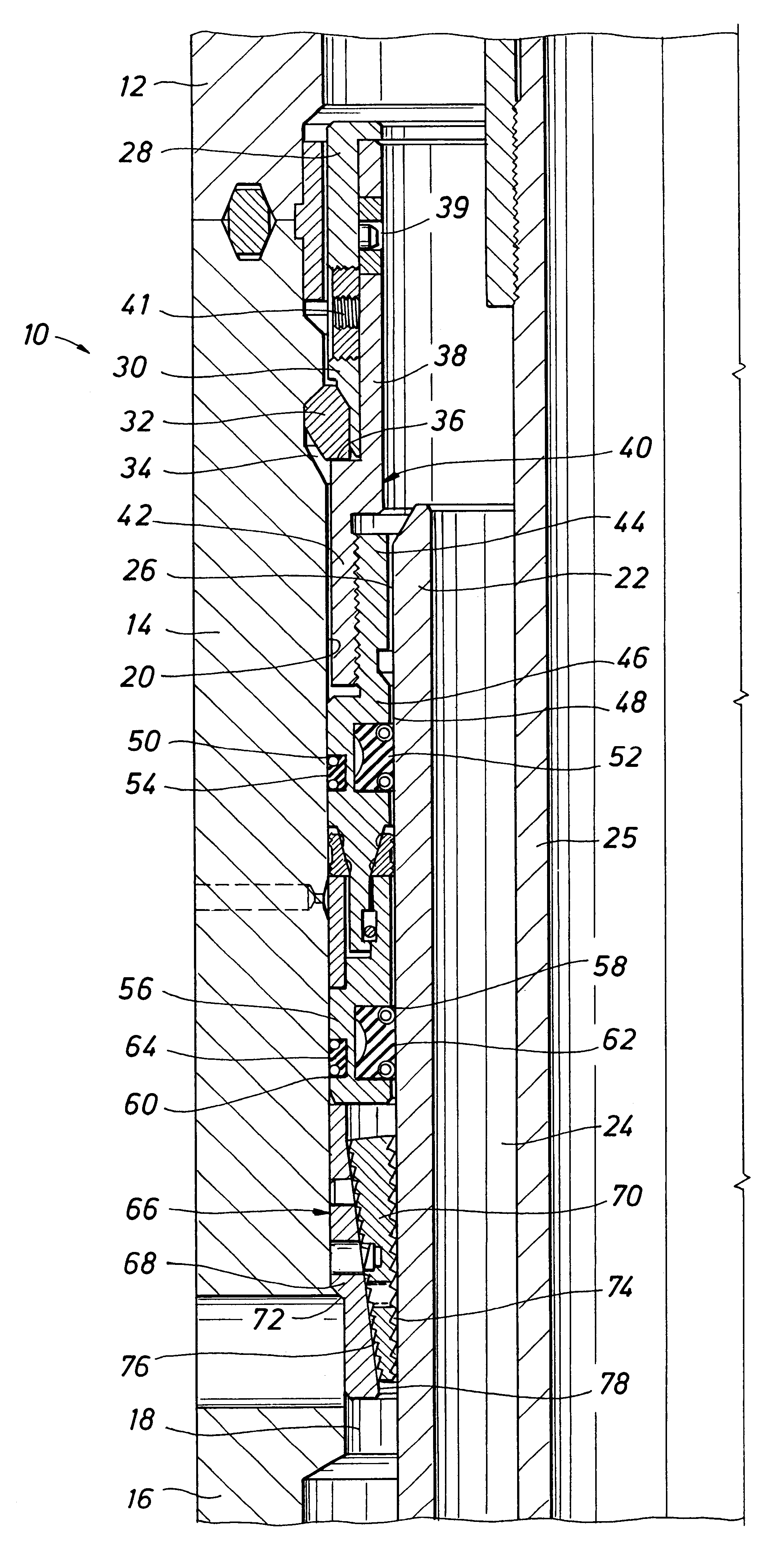Energized sealing cartridge for annulus sealing between tubular well components
a technology of annulus sealing and sealing cartridge, which is applied in the direction of sealing/packing, hose connection, borehole/well accessories, etc., can solve the problems of inability to deform into and establish efficient sealing with the surface pit, fissures and other irregularities of the surface irregularities of the outer peripheral well casing surface, and not a practical consideration
- Summary
- Abstract
- Description
- Claims
- Application Information
AI Technical Summary
Benefits of technology
Problems solved by technology
Method used
Image
Examples
Embodiment Construction
Referring now to the drawings and first to FIG. 1, a wellhead assembly of conventional nature is shown generally at 10 and has a tubular wellhead housing 11 having upper, intermediate and lower wellhead housing sections 12, 14 and 16 which are connected or otherwise maintained in sealed assembly. Regarding the wellhead housing, it is not necessary that the specific wellhead arrangement shown in the drawings be employed in order to practice the invention. The tubular wellhead housing defines an internal wellhead seal bore 18 having an internal cylindrical sealing surface 20. The sealing surface 20 is typically machined so that it is smooth so that sealing with it is relatively simple and efficient. Within the wellhead bore is typically supported the upper end of a section of well casing 22 which defines a casing bore 24 and also defines an outer peripheral surface 26 of generally cylindrical configuration. Within the casing bore 24 is typically located a tubing string 25, which may b...
PUM
 Login to View More
Login to View More Abstract
Description
Claims
Application Information
 Login to View More
Login to View More - R&D
- Intellectual Property
- Life Sciences
- Materials
- Tech Scout
- Unparalleled Data Quality
- Higher Quality Content
- 60% Fewer Hallucinations
Browse by: Latest US Patents, China's latest patents, Technical Efficacy Thesaurus, Application Domain, Technology Topic, Popular Technical Reports.
© 2025 PatSnap. All rights reserved.Legal|Privacy policy|Modern Slavery Act Transparency Statement|Sitemap|About US| Contact US: help@patsnap.com



